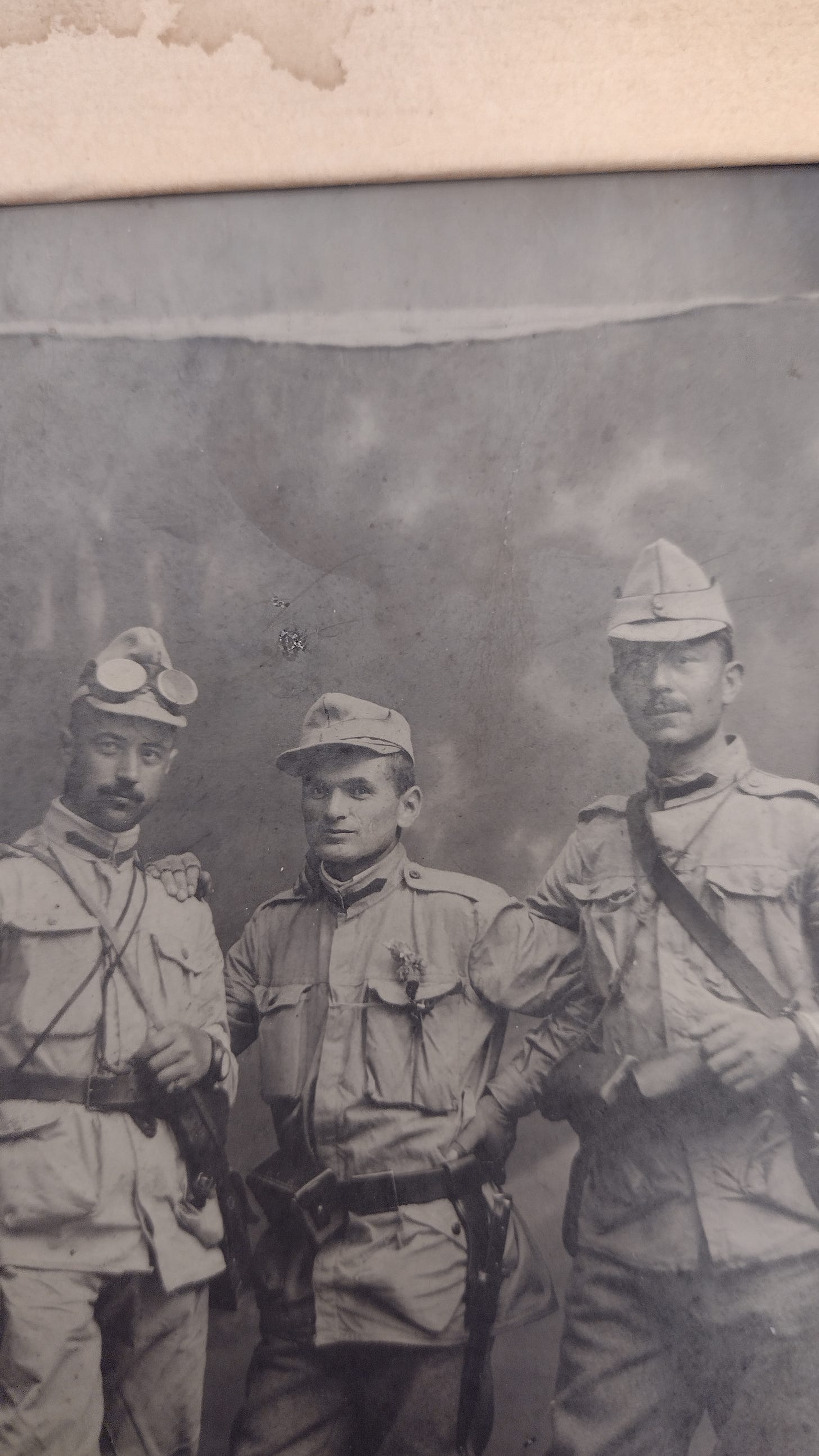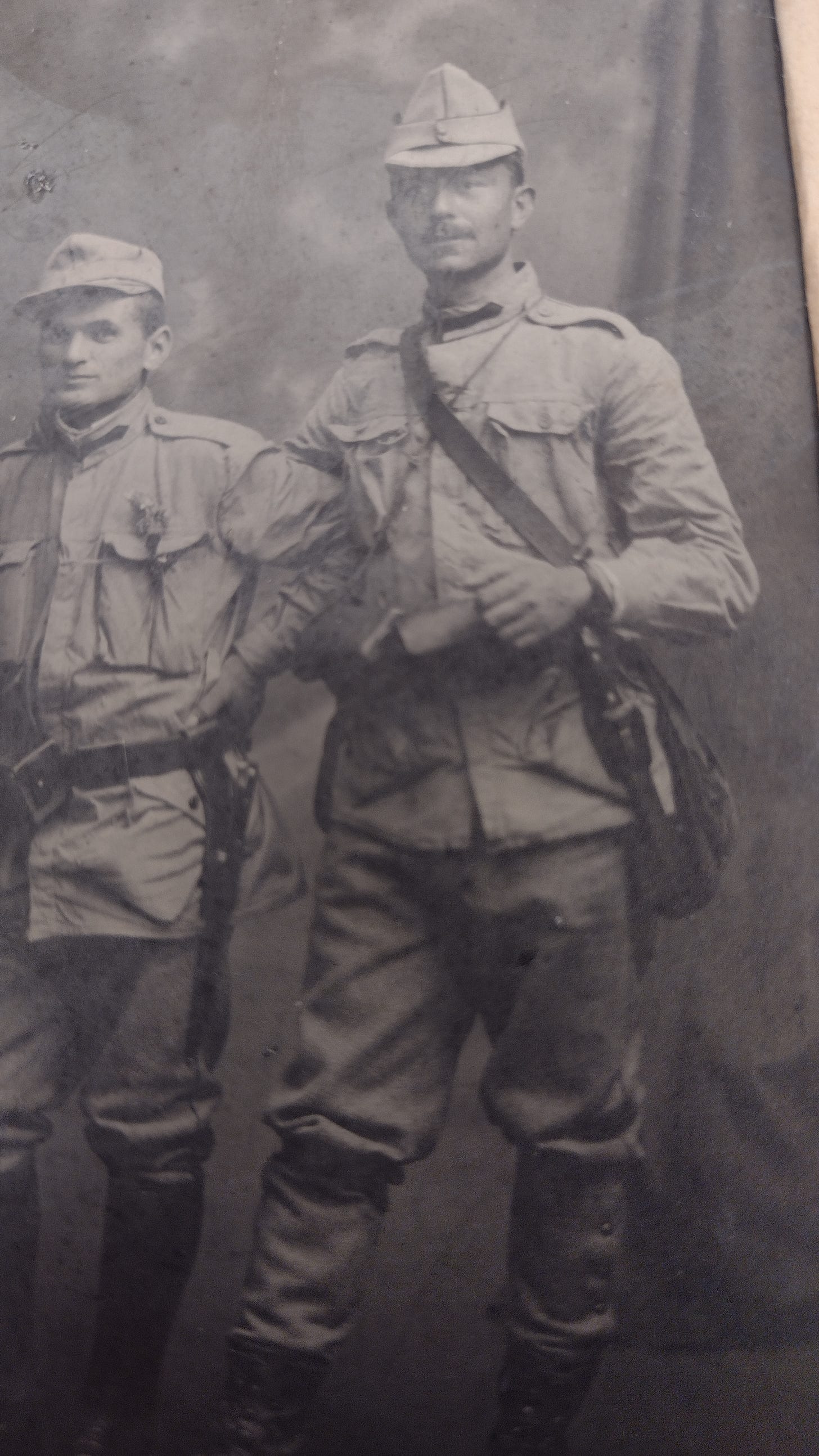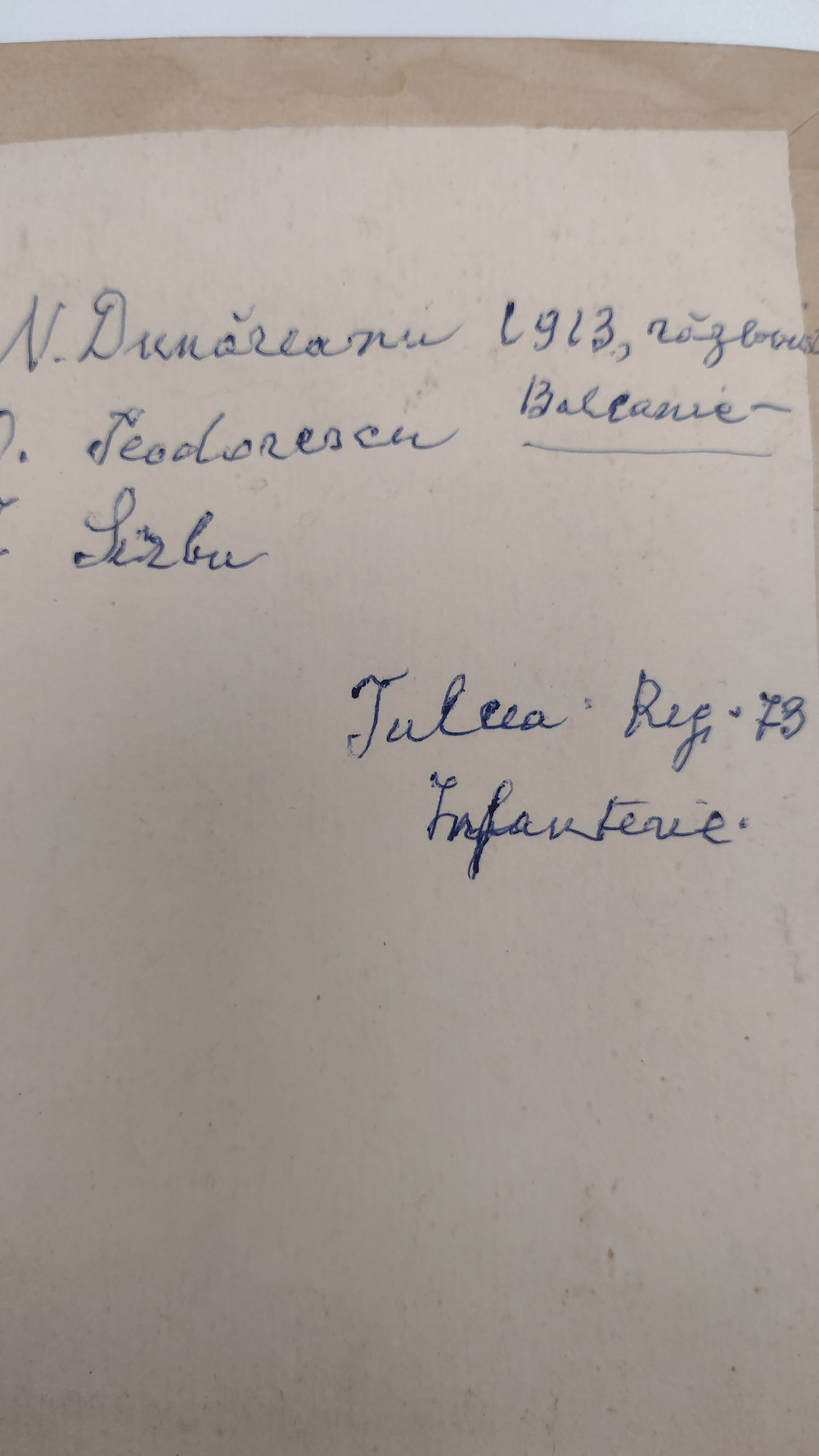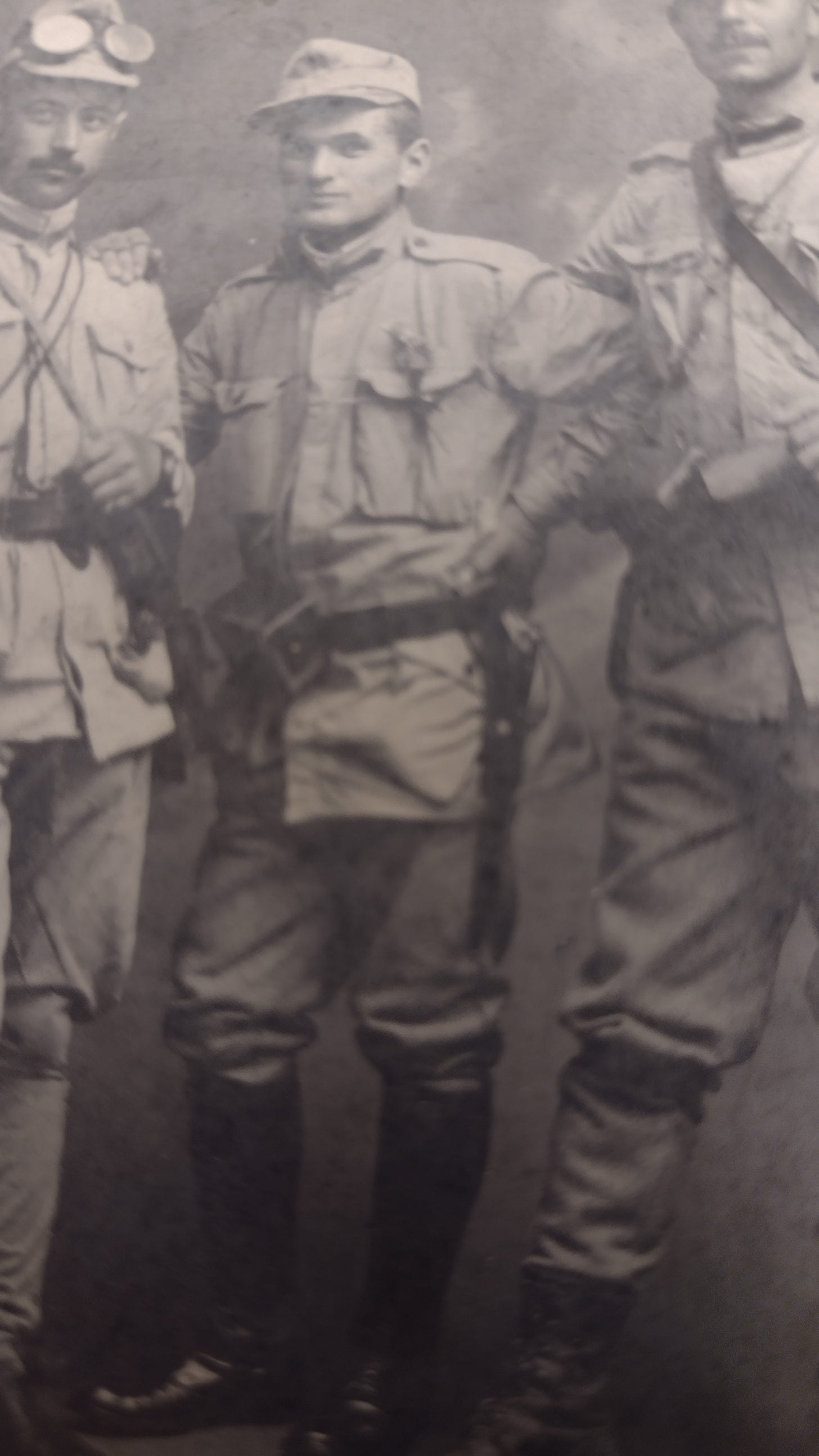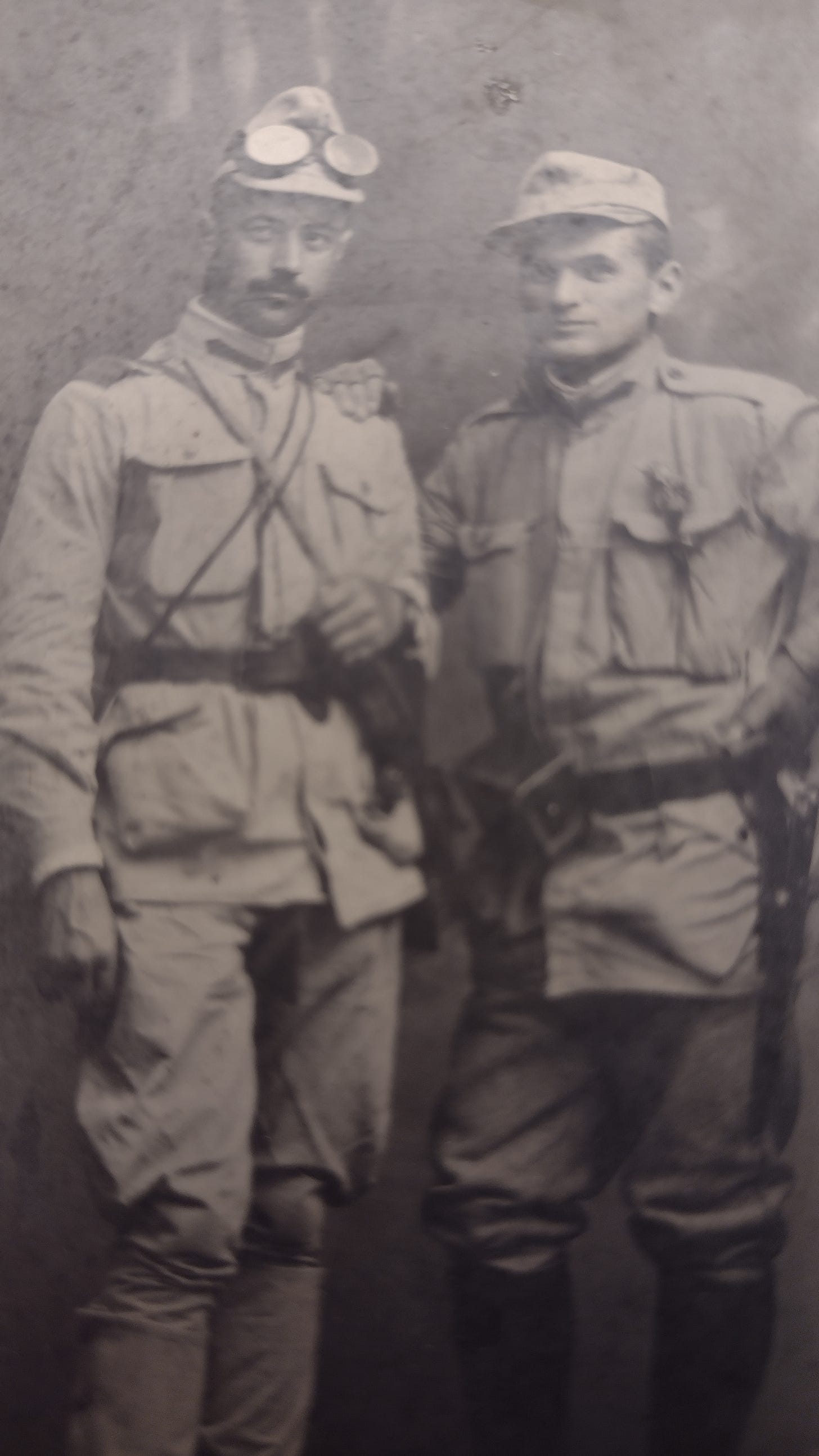Yesterday I was fortunate to find a very interesting pre-WW1 Romania soldiers’ photo at a flea market in Bucharest. It is a rare find that makes a great uniform study piece for the pre to early World War One Romanian Army period. The piece dates to the second Balkan war in 1913. The war was short and Romania joined in a little later than the other combatants so any items from this period are rather scarce.
Romania did not take part in the First Balkan War (1912-1913) between the Balkan League (Serbia, Bulgaria, Greece, and Montenegro) and the Ottoman Empire; however, Romania joined the Second Balkan War (1913) which was fought mainly between Bulgaria and the Balkan League. The Second Balkan War broke out because Bulgaria was dissatisfied with the distribution of territories after the First Balkan War. Bulgaria, feeling that it had been treated unfairly, attacked its former allies, Serbia and Greece, in June 1913. Romania, which had promised to remain neutral, declared war on Bulgaria on July 27, 1913, in order to gain access to the Black Sea.
Romania's intervention was decisive in the war, as it broke the Bulgarian army's back and led to Bulgaria's defeat. The Romanian army quickly advanced into Bulgaria, and the Bulgarians were forced to sue for peace. The Treaty of Bucharest, which ended the war, was signed on August 10, 1913. Romania gained Southern Dobruja, which had been part of Bulgaria, as well as part of the territory of present-day Bulgaria.
However, the war had a significant cost for Romania, as they suffered heavy losses in terms of human life and resources. Additionally, the Romanian victory in the Second Balkan War led to tension with its former allies, Serbia and Greece, who felt that Romania had taken more territory than it was entitled to. Also, the victory added to the tensions with the Russian Empire, which had been Bulgaria's ally, and the Central Powers (Germany, Austria-Hungary, and the Ottoman Empire) who had interests in the region.
During World War I, the Romanian army used a variety of uniforms that were similar to those used by other European armies of the time.
The main uniform worn by Romanian soldiers was a khaki-colored, four-pocket tunic with a standing collar and four buttons down the front. The tunic was worn with matching trousers, which were tucked into high, black boots. The headgear worn by Romanian soldiers was a khaki-colored, peaked cap with a red band and a red star on the front.
The officers of the Romanian army wore a similar uniform, but with some variations. They wore a khaki-colored, four-pocket tunic with a standing collar and four buttons down the front. The tunic had gold braid on the cuffs and collar. They also wore a sword belt and a saber. The headgear worn by officers was a peaked cap with a khaki-colored top and a red band.
The Romanian cavalry wore a similar uniform to the infantry, but with slight variations. They wore a khaki-colored, four-pocket tunic with a standing collar and four buttons down the front. The tunic was worn with matching trousers, which were tucked into high, black boots. They also wore a black, cylindrical helmet with a horsehair plume.
In addition, the Romanian soldiers were issued with a variety of equipment, including belts, backpacks, haversacks, and ammunition pouches. They also carried rifles, bayonets, and grenades.
During the war, Romania's uniform changed several times, adapting to the environmental and logistical conditions. Romania entered the war with the Ottoman Empire and Central Powers, but soon switched sides and joined the Entente powers. As a result, Romanian soldiers ended up wearing different types of uniforms, either captured or supplied by the Entente powers.
In this photo, you can see the uniforms worn by these prewar soldiers which were not typical. The different styles of caps are noted. You can see their bayonets and ammunition pouches and the standard trousers tucked into their boots as was a typical Romanian style. You can see the flashes on their collars which were typical of the pre-to-early war uniforms only worn by Romanian soldiers. On the back, the soldiers are named and from what area they are from and serving with the 73rd Regiment.





